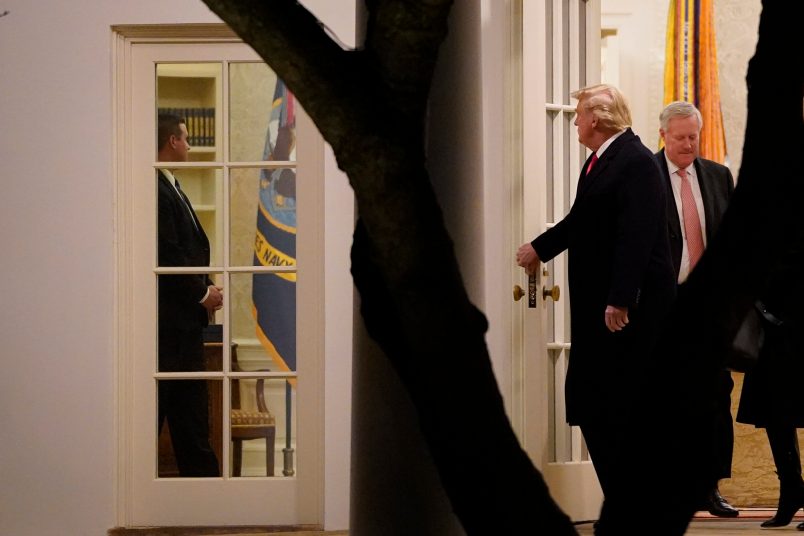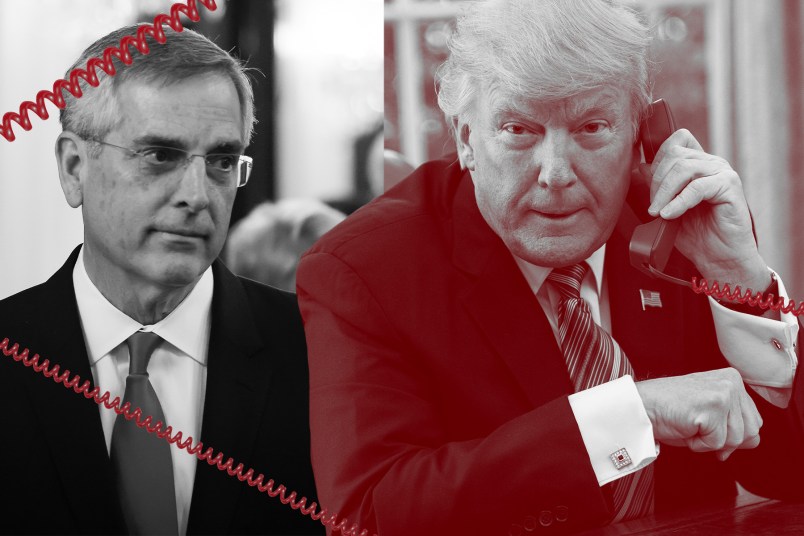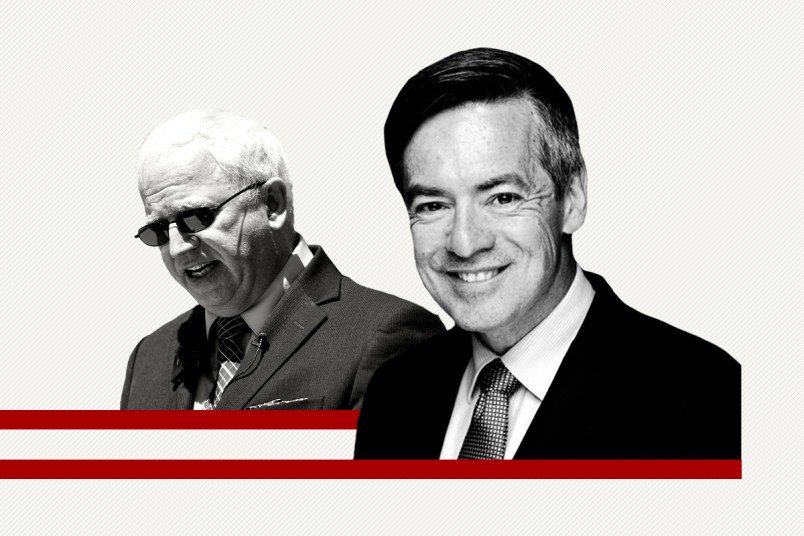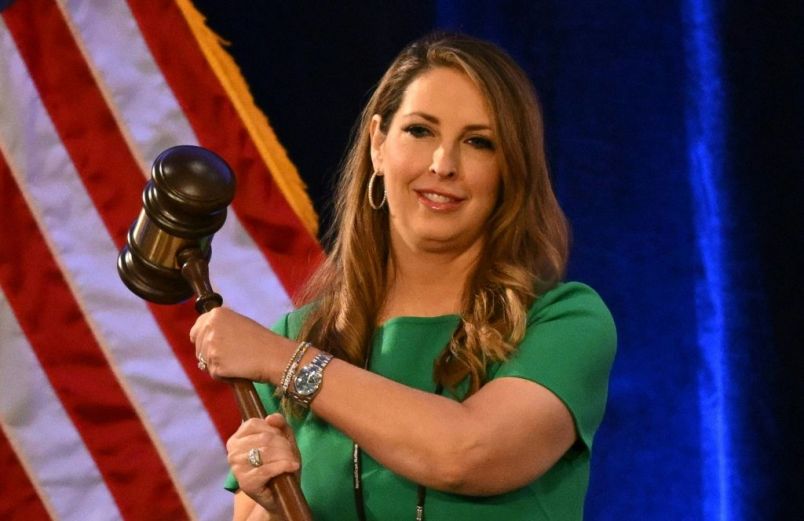One week before Jan. 6, Fox News host Sean Hannity was trying to make the White House see reason.
“We can’t lose the entire WH counsels office,” he wrote in a Dec. 31 text to Chief of Staff Mark Meadows, released by the Jan. 6 Committee. “I do NOT see January 6 happening the way he is being told. After the 6 th He should announce will lead the nationwide effort to reform voting integrity.”
Privately, Hannity urged calm. Publicly, he fanned the flames of the Big Lie that the 2020 election was stolen as much as anyone else, lending his show that night to Rep. Louie Gohmert (R-TX), who further stoked claims that not only was the election stolen, but that Trump still had a viable path to hold on to power.
Hannity sent the text as Trump’s efforts to stay in power didn’t quite crystallize, but instead reached a repetitive crescendo: the DOJ, Congress, the state of Georgia, and Mike Pence all faced attempts to reach beyond their authorities to keep Trump in power.
The Jan. 6 Committee’s investigation remains very much ongoing, and the information about its findings that has been released so far has been piecemeal, often coming in letters and subpoenas demanding information from a growing list of potential witnesses.
But the combination of texts, notes, and other records cited by the committee in these scattered revelations shed light on how Trump and those true believers around him grasped at anything they could that would legitimate objections to the count on Jan. 6.
When those efforts ended in catastrophe, some of the same people who had been boosting them found themselves struggling to rein Trump in.
The week in the run-up to the 6th was an insane one by any standard. On Jan. 2, Trump called Georgia Secretary of State Brian Raffensperger, telling him, “I just want to find 11,780 votes.”
That bid failed.
It was followed by another effort to replace the acting attorney general with Jeffrey Clark, an assistant attorney general who wanted to have the DOJ intervene on Trump’s behalf in the election results.
“I heard Jeff Clark is getting put in on Monday. That’s amazing. It will make a lot of patriots happy,” wrote an unnamed person to Meadows on Jan. 3. “And I’m personally so proud that you are at the tip of the spear and I could call you a friend.”
That evening, senior DOJ officials and Trump’s White House counsel threatened to resign if Clark were appointed during an angry meeting in the Oval Office, defeating the DOJ gambit.
Two days later, it was the eve of Jan. 6.
Again, Hannity knew that something bad was coming.
“Im very worried about the next 48 hours,” he texted Meadows on the evening of Jan. 5. “Pence pressure. WH counsel will leave.”
The same evening, as the Georgia Senate results rolled in showing a good night for Democrats, Hannity interviewed Eric Trump on his show, where the two speculated about election fraud in Georgia and discussed the rally planned for Jan. 6.
“The thing that has flabbergasted me is: no curiosity,” Hannity said, describing the claims of election fraud.
“Supposedly whistleblowers and eyewitnesses were important — but only if they’re anonymous, and hearsay, and against your dad,” he joked to the President’s son. “We had hundreds of them who signed affidavits under penalty of perjury, but no one wanted to hear.”
“You see the Stop the Steal rally tomorrow,” Eric Trump replied. “You literally have hundreds of thousands of Americans that are descending on Washington D.C. because they know exactly what happened.”
‘Not enough’
Flash forward to the next day. As Trump finished speaking, a mob of his supporters stormed the Capitol.
Trump’s first public reaction, at 2:24 p.m., was to issue a tweet condemning Pence for not having “the courage to do what should have been done to protect our country and our Constitution.”
The White House released Trump’s video from the Rose Garden at 4:17 p.m., in which the President sympathized with the protesters’ “pain” and “hurt” following a “stolen election,” but urged them to “go home now.”
More texts released by the Jan. 6 Committee show that in the hours before that video, his staff and his family furiously tried to get the President to say or do something.
“He’s got to condemn this s—t ASAP,” Trump Jr. wrote to Meadows during the insurrection. “The Capitol Police tweet is not enough.”
“I’m pushing it hard,” Meadows replied.
Hannity, who had promoted the rally on the Ellipse the night before, texted an unnamed senior White House official: “Can he make a statement. I saw the tweet. Ask people to peacefully leave the [Capitol].”
Staff tried to find a way for someone to reach him.
“Is someone getting to potus? He has to tell protestors to dissipate. Someone is going to get killed,” read one text to an unnamed White House staffer.
That staffer replied: “I’ve been trying for the last 30 minutes. Literally stormed in outer oval to get him to put out the first one. It’s completely insane.”
It was Ivanka Trump who, according to testimony from Pence security adviser Gen. Keith Kellogg, got through, repeatedly speaking to her father.
Aftermath
In the days that followed the attack, texts released by the committee show, those in Trump’s orbit seemed to fear most of all that he might do something worse.
On Jan. 7, Hannity texted McEnany a five-point plan for speaking with the President. The final three points haven’t been released, but the first two include “no more stolen election talk” and a reminder that, “yes, impeachment and 25 th amendment are real.”
“Love that. Thank you. That is the playbook,” McEnany replied.
Hannity added that “no more crazy people” was “key now.”
Yet some potential candidates for “crazy people” did appear at the White House in the following days. MyPillow CEO Mike Lindell arrived on Jan. 15 with a sheaf of papers that had “martial law” written on them, for example.
Again, on Jan. 10, Hannity texted Meadows and Rep. Jim Jordan (R-OH), expressing some anxiety over a conversation he had had with Trump that day.
“He can’t mention the election again. Ever. I did not have a good call with him today,” Hannity wrote. “And worse, I’m not sure what is left to do or say, and I don’t like knowing if it’s truly understood. Ideas?”
One fear that circulated at the time was of further attacks at state capitols around the country. Jan. 6. investigators are still working to determine the extent of White House communications with those behind the attack on the Capitol, though a text from Fox News host Laura Ingraham suggests that people were afraid of a repeat scenario, perhaps involving Trump, at the state level.
“Remarks on camera discouraging protest at state capit[o]ls esp with weapons will be well advised given how hot the situation is,” she wrote on Jan. 12 to Meadows. “[E]veryone needs to calm down and pray for our country and for those who lost their lives last week.”






